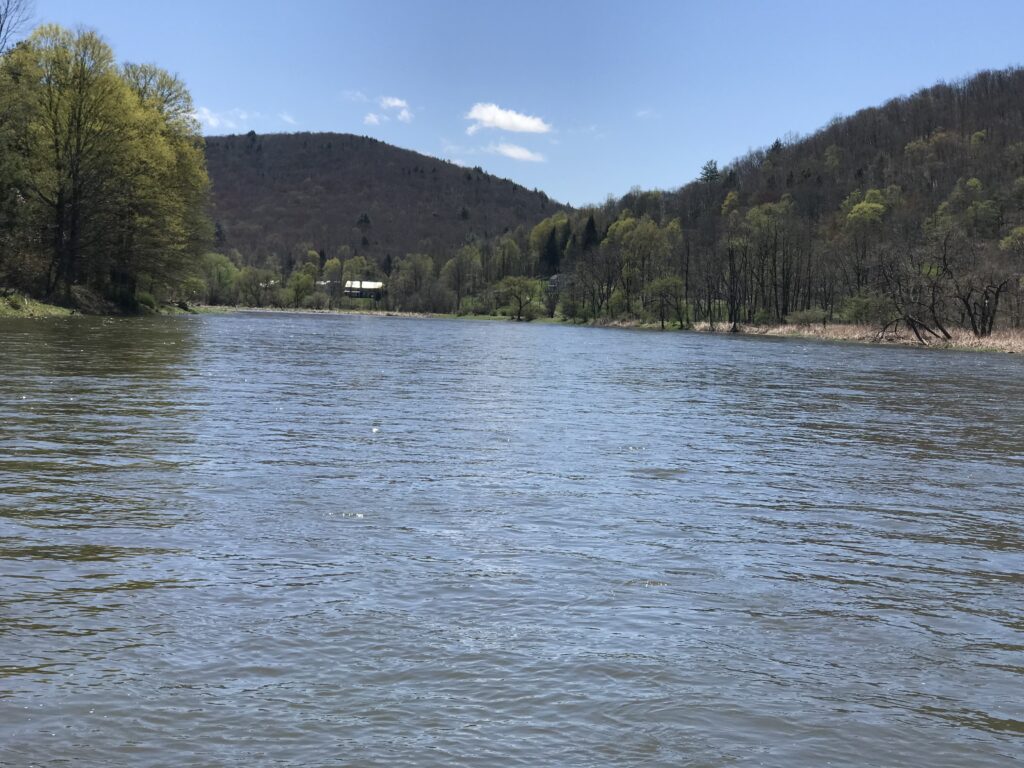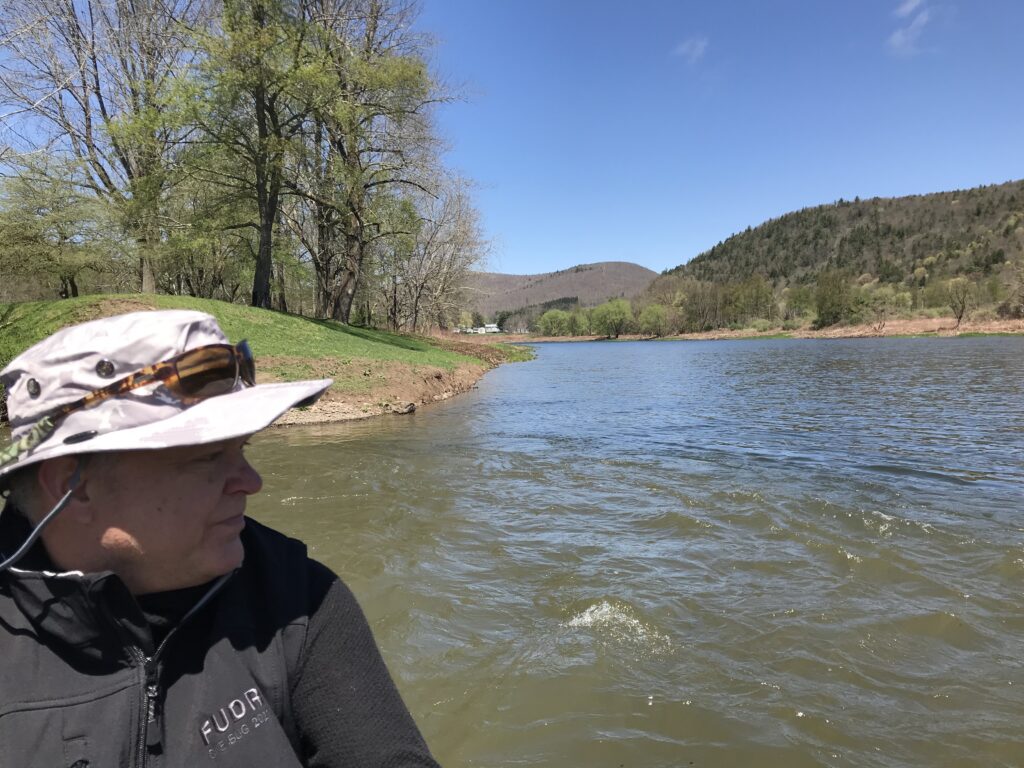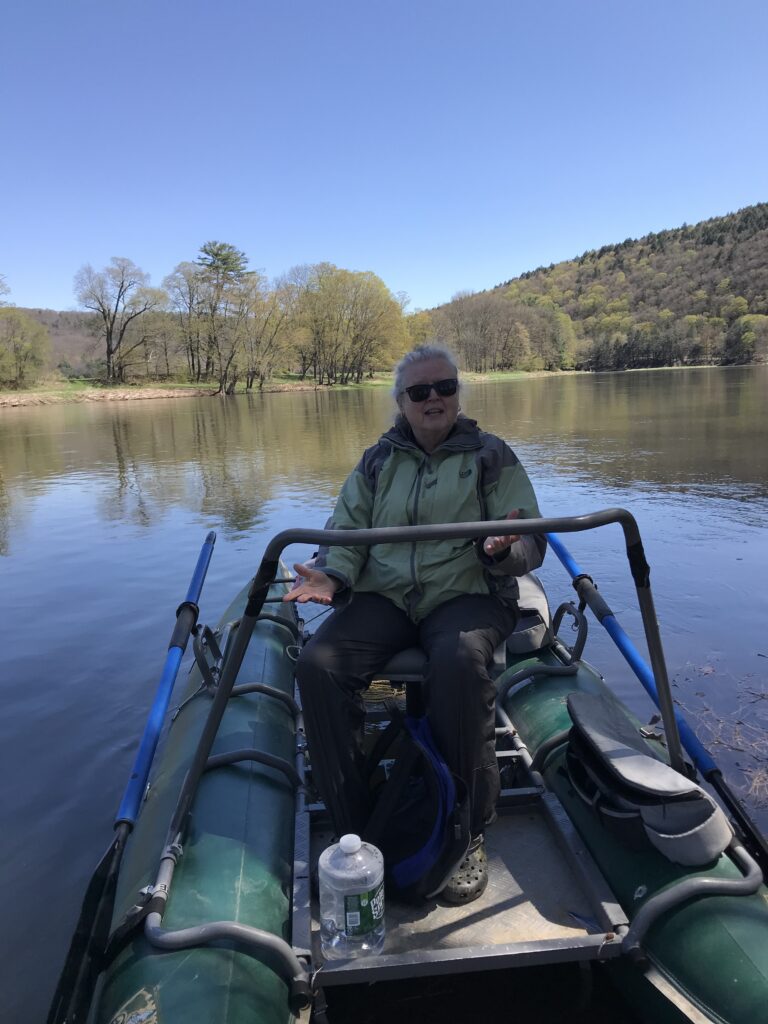
One Bug: A day on the Delaware
| May 28, 2021
When I get a chance to get onto the Delaware River, I jump at the opportunity, especially the upper river, where trout fishing flourishes.
Jeff Skelding, the executive director of the Friends of the Upper Delaware, invited me to its One Bug fly-fishing event — a two-day trout-fishing competition where the biggest prize is bragging rights — no small thing among anglers.
The morning of May 1 started out rainy and chilly — a typical spring day in the upper Delaware. And most of the time when I travel farther upriver for an event, it’s usually raining, especially if it’s outdoors
Wet clothes get really uncomfortable and cold, so I made an investment in very glamorous waders — which you can see in a photo of me at the end of this story — and followed Skelding’s advice: Dress for temperatures a lot lower than whatever the water report says.
So I did. But by the time I got to Hancock, N.Y., the sun was bright, and I almost thought I had the wrong place. The river was shining in the sun, and where we were going to put in, the river looked like it was in a big hurry.
VIDEO BY MEG MCGUIRE
Time for a confession: I love all sorts of water, rivers, lakes, and of course, the ocean, but I can’t swim and I get nervous in small boats.
It so happens that the previous day, Skelding had asked the people in charge of the New York City reservoirs (the NYC reservoirs capture the upper Delaware River water) to release more water. But when the river is low upriver, chances are it can be low downriver as well, so the request was denied.
But lo and behold, the rain gods had delivered during the night and the river was running fast, especially where we were going to put in, just near the Route 191 bridge in Hancock, N.Y.
Skelding was taking me on the river in a drift boat, much like the ones the river guides use for the One Bug. The name comes from how they are used — drifting down the river. (A great way to see the river!)


Guides are key to the One Bug, and hired by the FUDR. Most drift boats have three seats, the one in the middle is for the guide, who’s in charge of guiding the boat, and there are two for the anglers.
All the guides are deeply knowledgeable about where you’re most likely to find fish — and licensed by the National Park Service. But the river, the fish and the bugs are unpredictable. The short time I was on the river, we saw no bugs, and therefore only saw one trout rising. It’s when the fish rise to catch those bugs that you know where to place your fly. And the flies vary depending on the time of year and what bugs are attracting the attention of what fish — a surprisingly exact science.
Skelding said that the upper reaches had more luck with catching fish than the part of the main stem we were on. That’s part of the lure of fishing — it’s a combination of luck and talent.
For the One Bug, each angler is half of a two-person team, and usually teams are split up to ensure fairness. This year, as a concession to the horrible year of Covid, teams were allowed to be together in the same boat.
And the name of the contest — One Bug — refers to one of its big rules: you’re only allowed to use one fly, or lure, during the contest. So there’s a lot of thought given to what that one vital piece of equipment will be. The anglers can have second thoughts about their choice, but no second chance to choose.
You’ll see in the list of winners below that there’s a Squirrel Award — given to the most heroic rescue of a fly by a guide. That’s important because if that fly is lost, the angler is out of the competition.
There were 23 boats, 23 guides and 23 teams.
And here’s the list of winners:
Top Teams:
1st Simms/Costa: Rex Messing and Steven Spurgeon, 1010 points
2nd Currently Sober – Joe Cusato and Eric Hirschberg, 930 points
3rd Kyped Crusaders – Travis Conley and Alex Smith Constantine, 830 points
Top Individuals:
1st Steve Spurgeon 580
2nd Travis Conley 550
3rd Joe Cusato 510
Top Guides:
1st Darren Rist
2nd Luc Genovese
3rd Ryan Furtak
Squirrel Award (most heroic rescue of a fly in peril): Jared Mink
Biggest Fish: Jiri Hill 22” Brown on a streamer
And I promised you a photo of me:







